
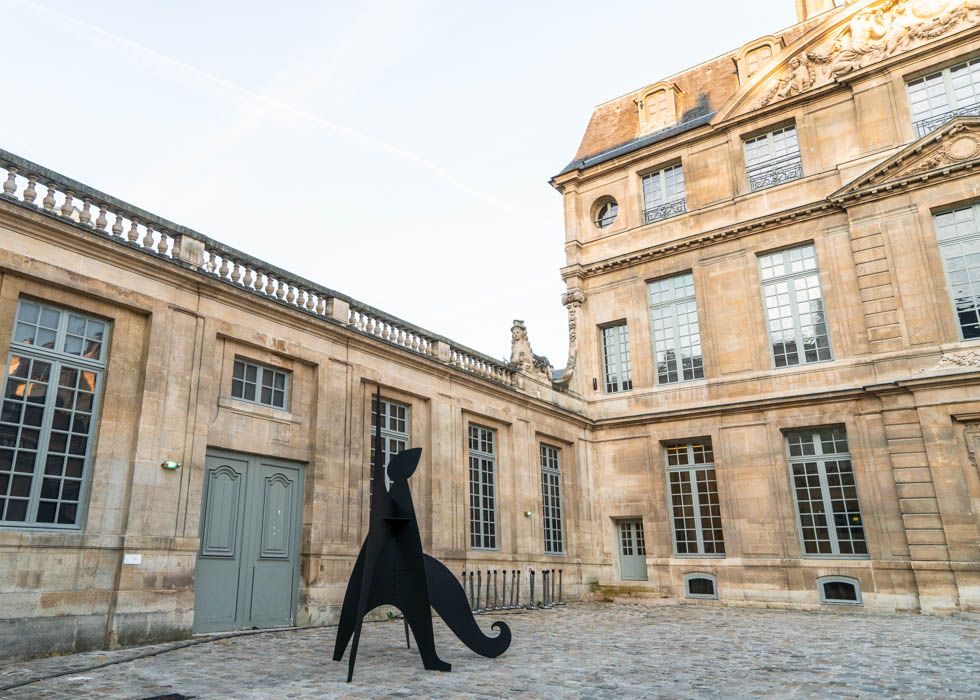
The Musée national Picasso-Paris opened in 1985 in the Marais district and instantly became famous for having the largest public collection of Pablo Picasso's artworks. It includes more than 5 000 paintings, sculptures, drawings, ceramics, prints, engravings and notebooks and tens of thousands of archived pieces from Picasso’s personal repository. The museum is situated in the Hôtel Salé, built in the middle of the 17th century and its elegant and harmonious architecture is on its own worth seeing and admiring. The contrast between the historic building, an exquisite interior and the modern art of the Spanish genius reflects perfectly the spirit of the Marais - a unique Parisian district with medieval architecture that has been renovated in the last decades and nowadays hosts hundreds of small designer boutiques and stylish coffee shops.
The current exhibition, Calder - Picasso, started on February 19th, 2019 and will continue until August 25th, 2019. It focuses on the relationship and artworks of two seminal figures of twentieth-century art: Alexander Calder (1898-1976), an American sculptor best known for his innovative mobiles, and Pablo Picasso (1881-1973).
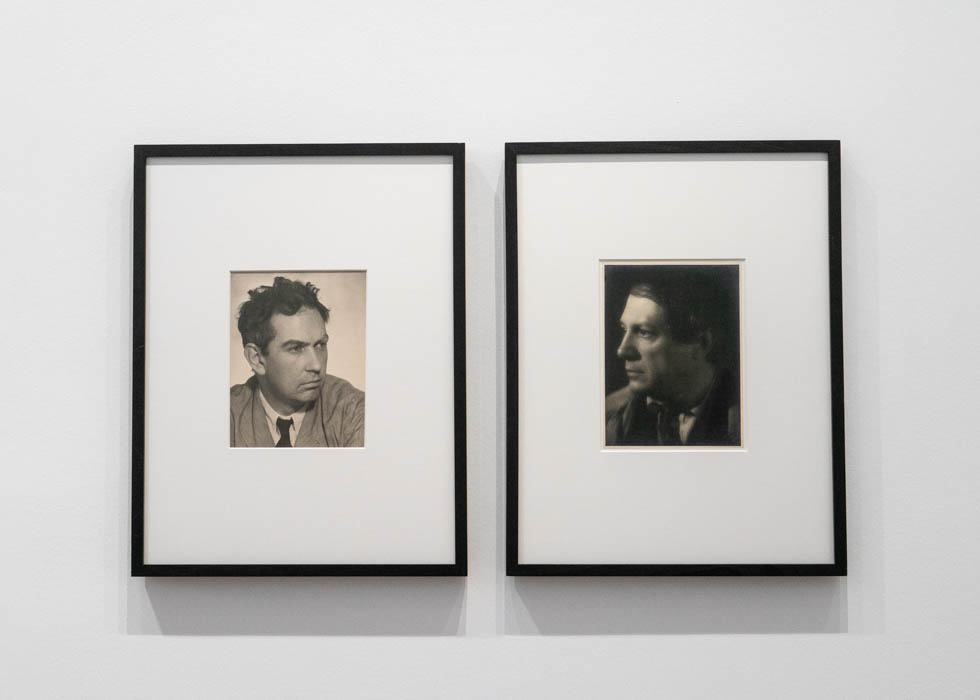
A great innovator of 20th century art, Pablo Picasso is famous for his blue and rose period, cubistic and abstract paintings. Alexander Calder is primarily known for his sculptures that are unique engineering constructions. He spent half of his life in Paris and was especially inspired by the avant-garde artists and intense cultural life of the 20s. Picasso and Calder met in 1931, and immediately realized that both were exploring the question of space and shape.
At this exhibition you will discover how both artists treated the void and captured the movement of objects in space.
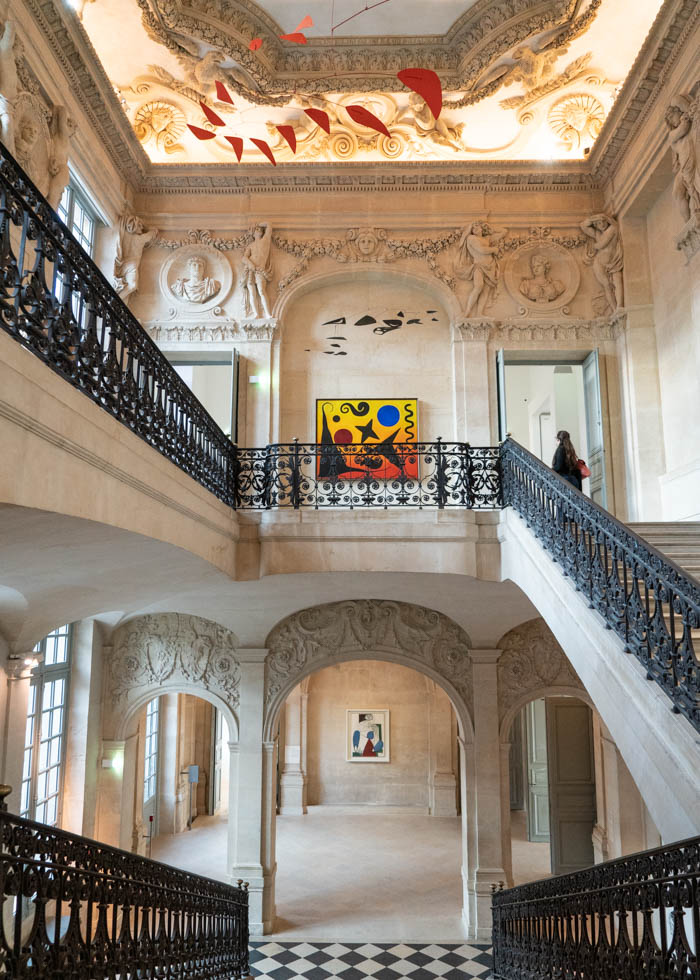
The exhibition starts from the ground floor. You can also find some of Calder's artworks in the hall with the signature staircase of the museum. The ambition of the museum is to display the chef d'oeuvres of Picasso and Calder reflecting their ideas about the abstract notions of space, emptiness, infinity. One can clearly feel the interplay between the space of the museum and the works of art.
This exhibition allows you to follow the evolution of the art and philosophy of Calder and Picasso. Descriptions are available both in English and French.
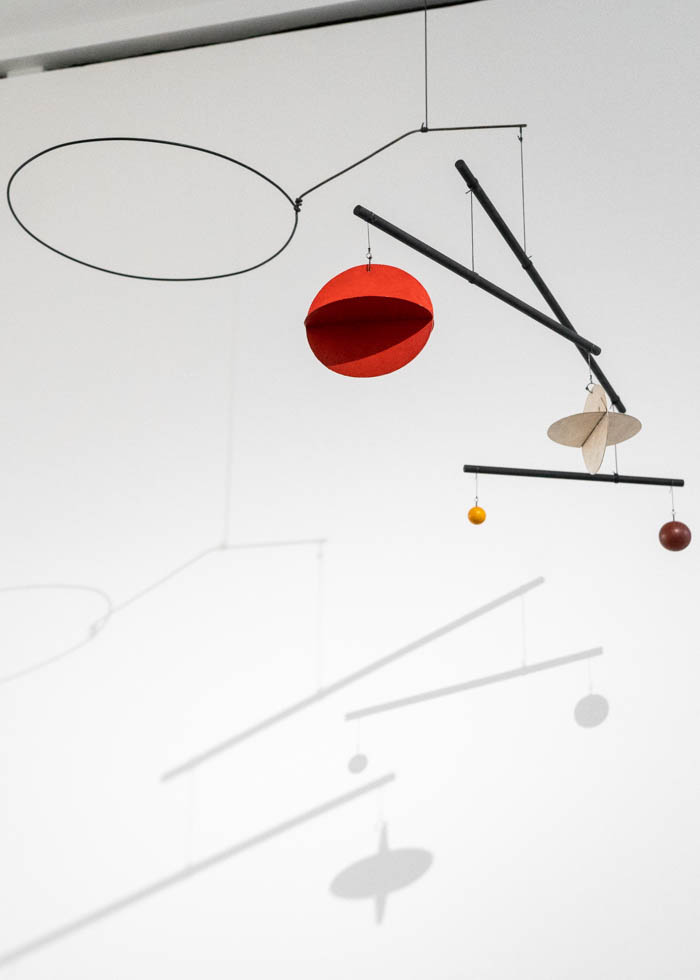
In the first room, Calder's masterpiece, "Mobile", welcomes you. It was in 1931 that he created this completely novel piece of art - a moving sculpture with a little motor. Marcel Duchamp, one of the greatest Dadaists, soon named it "Mobile". As you move by, Calder's "mobiles" move delicately with the flow of air in the room.
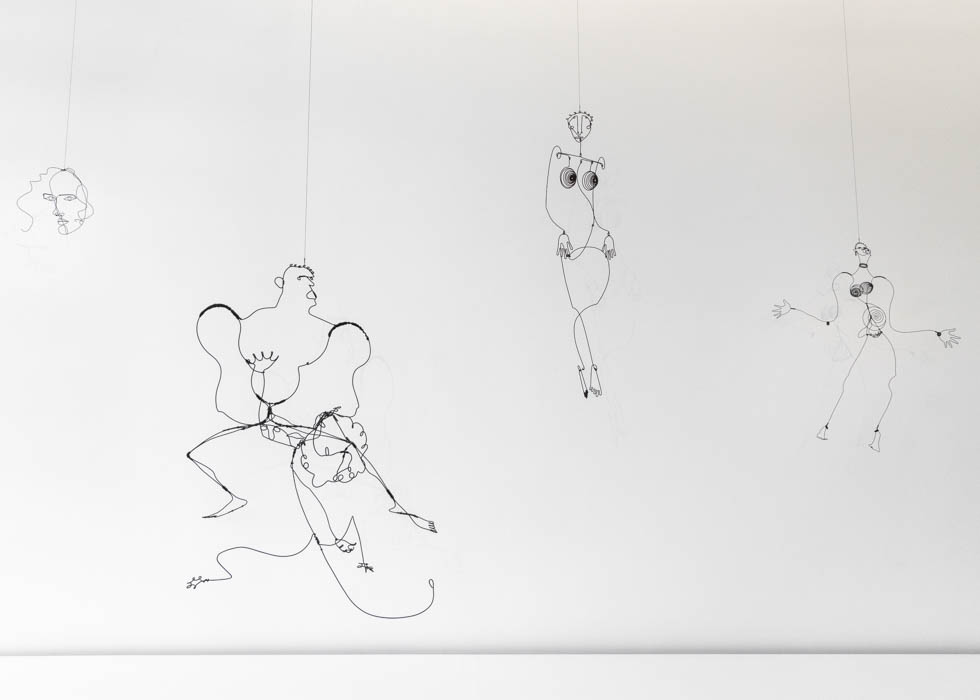
Calder was born in a family of sculptors, and since his early age he was familiar with metallic materials. He created these mythical objects by creating simple shapes out of wire, a new material in the 20s. The biggest sculpture in this picture is the silhouette of Hercules and a lion. At first sight, it looks like a flat structure, but in fact it has a complex three-dimensional shape. If you observe these sculptures while moving from the left to the right, you will see a variety of faces.
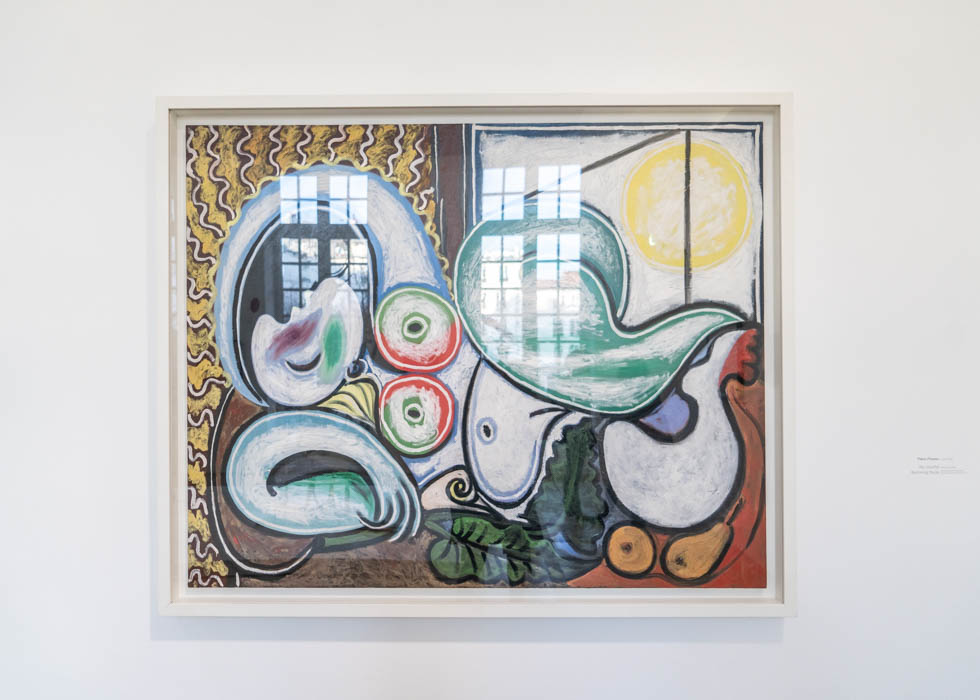
A classical subject - a lying nude. Here Picasso painted a naked female body by dividing it into several parts.
Françoise Gilot and Carlton Lake wrote in Life with Picasso in 1990 : “When you look at Cézanne’s apple, you see that he hasn’t really painted apples, as such. What he did was to paint terribly well the weight of space on their circular form. (...) It’s the rhythmic thrust of space on the form that counts”. This painting can be seen as a meditation on emptiness and fullness. He reaffirmed the relation of these two opposites, as the fullness of the object counterbalances the weight of emptiness.
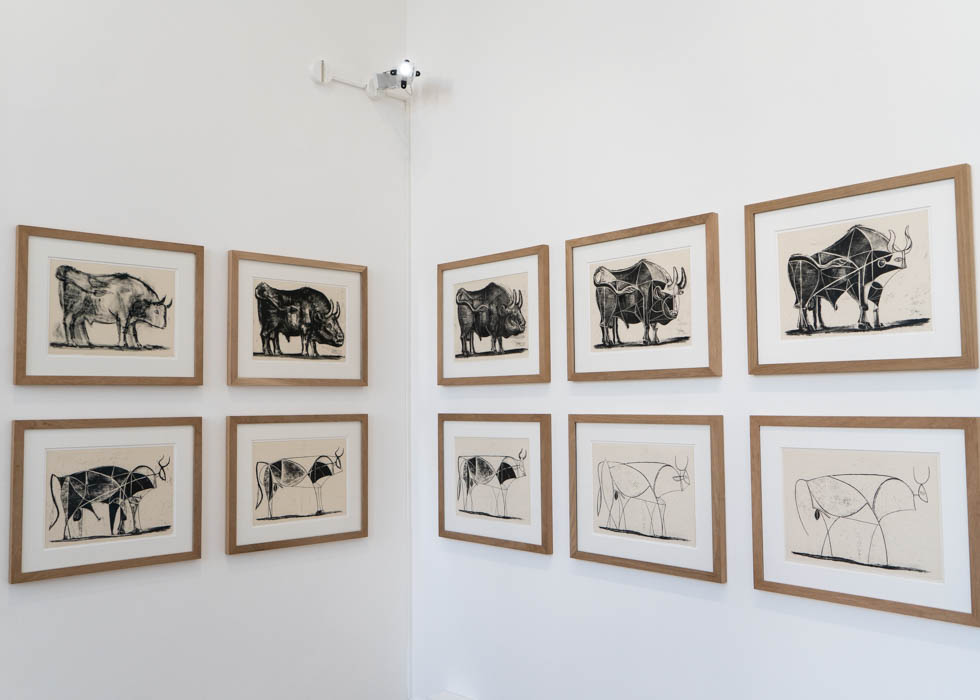
Since Spanish Civil War, Picasso’s paintings took on dark colors as his style in general became harsher. This series of lithographs shows us a bull in ten different ways. You can see how its forms evolved from a classical drawing to a more abstract form that reminds us of Calder's wire sculptures.
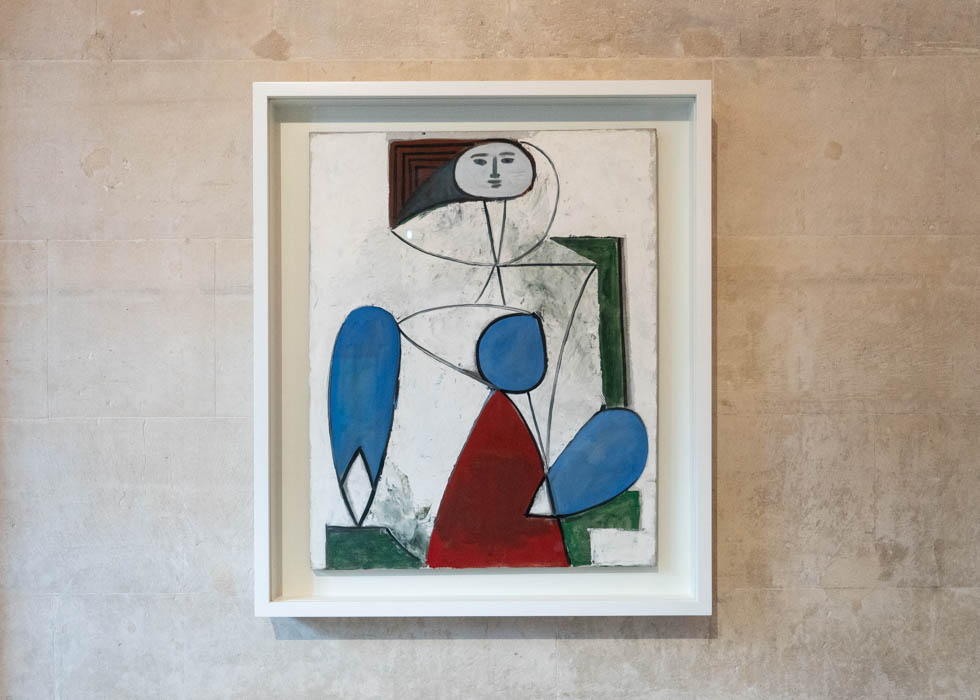
The sitting woman is the image that Picasso referred to many times. He represented it in a simplified form by using minimalistic lines.
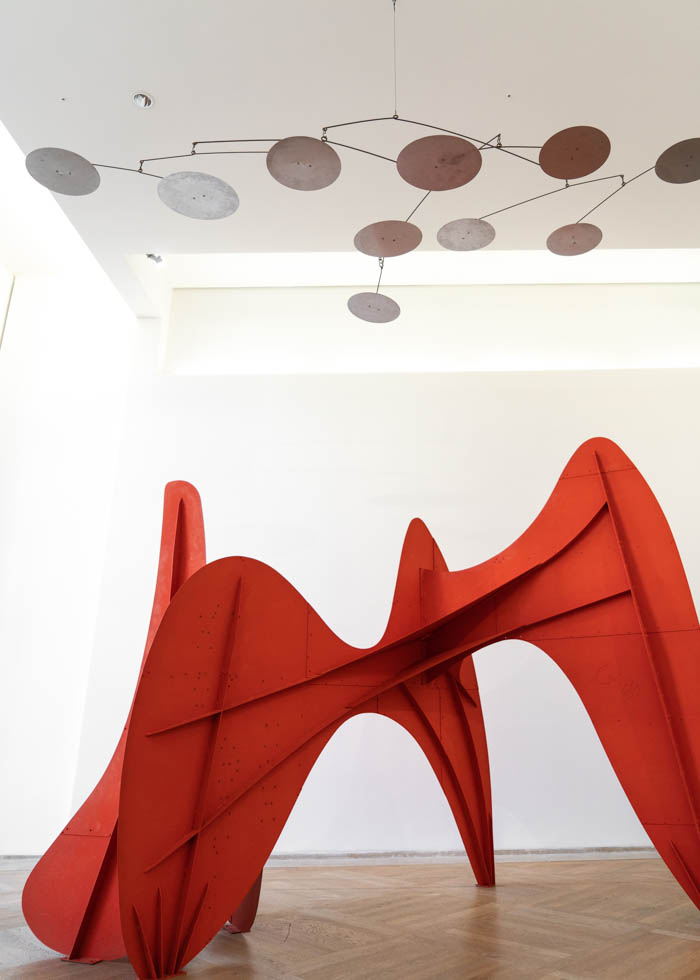
This is one of the miracles of Calder's engineering and artistic genius: an object which is planar and volumetric at the same time. By using two-dimensional materials he constructed a three-dimensional sculpture. It gives us a dynamic impression as it plays with both weight and a vivid color.
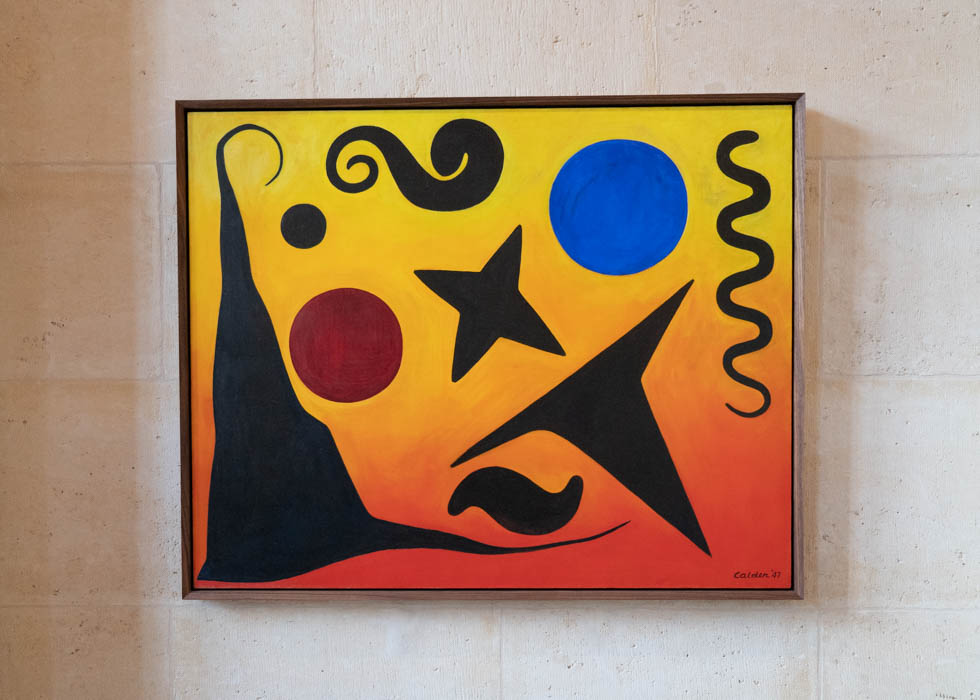
Don't miss a chance to take an audioguide. The museum is very popular among Parisians and tourists, so to avoid the long waiting on a queue, you can book the ticket in advance online and use O’bon Paris’ special promo code to get 2 euros discount. Or, you can also use the Paris Museum Pass and visit the museum along with many other sights for reduced price.
After visiting Musée national Picasso-Paris, take a walk in the charming narrow streets of Marais. If you are hungry, check the Méert patisserie and try its delicious waffles.
Words by Yuka
Photographs by Yuna Lee
Address : 5 Rue de Thorigny, 75003 Paris
Transportation : Metro line 1 Saint-Paul Station or line 8 Saint Sébastien Froissart
Exhibition Period : February 19th 2019 to August 25th 2019, Tuesday to Sunday 10:30-18:00 (Extended hours from 9:30 on weekend and holiday)
Price : adults - 14 euros, reduced tarif - 11 euros. Free on first Sundays of each month (Click here for more details)
Audio Guide : 5 euros for adults, reduced tarif - 4 euros (French, English, Spanish, German, Chinese)